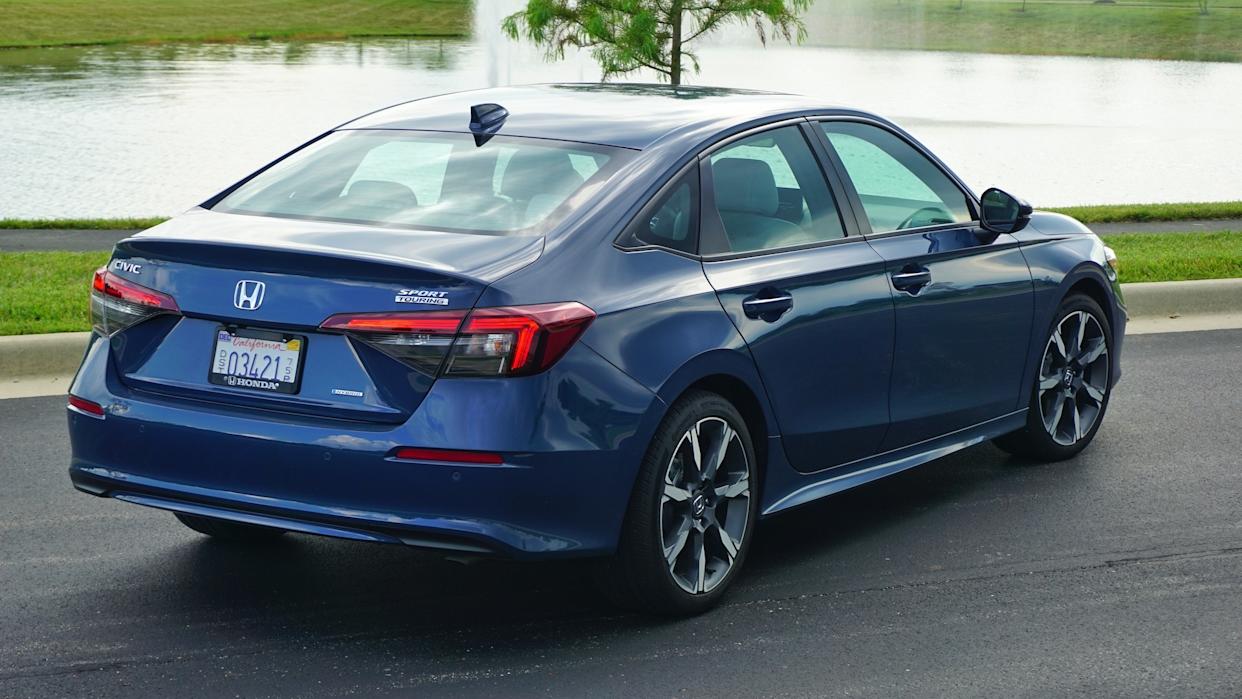
Despite cars becoming larger and heavier over the years, there are many fuel-efficient vehicles currently on sale that won’t break the bank. There are options in the gasoline segment, hybrid, and also plug-in hybrid, though the latter are typically less affordable. Either way, car shoppers are spoiled for choice. My choice—and I really mean my choice, because this is the car I’d buy tomorrow if I needed one—is the 2025 Honda Civic Hybrid.
We’ve reviewed the Civic Hybrid twice over the last 13 months, calling it a “Prius Hater” after a couple of hours behind the wheel of a prototype last June. In March, we named it a “Top Choice” after a week-long test in the frigid Canadian winter. What did these tests have in common? They were both relatively brief, providing just miniature snippets compared to a real-world ownership experience. So, why not find out how one performs over a couple of months?
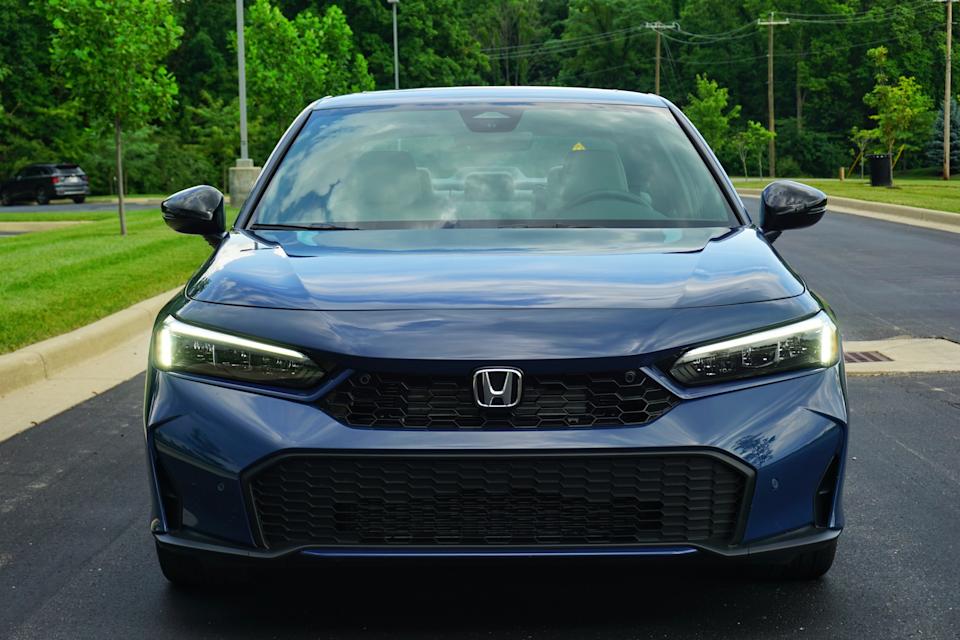
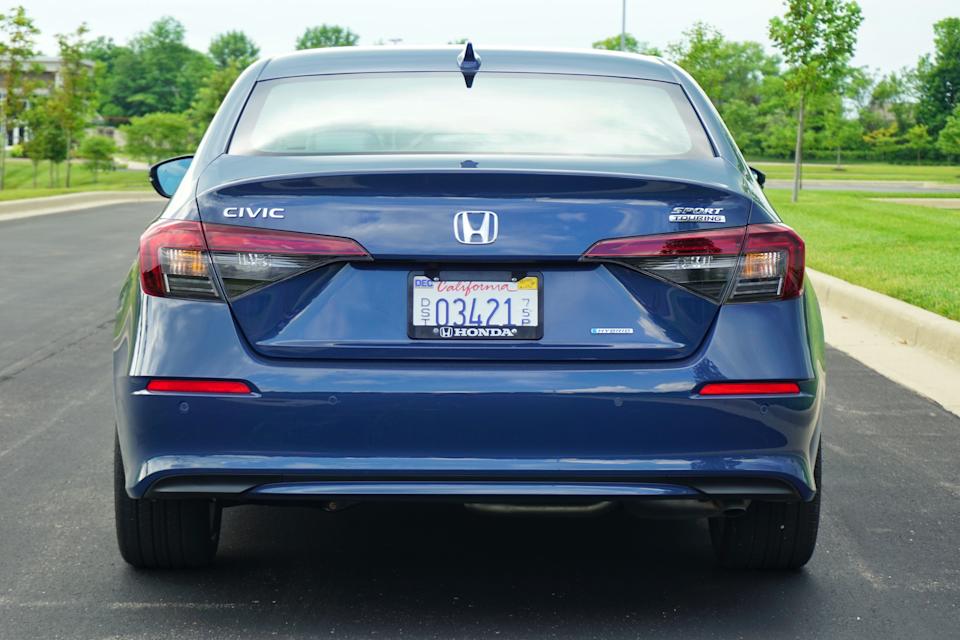
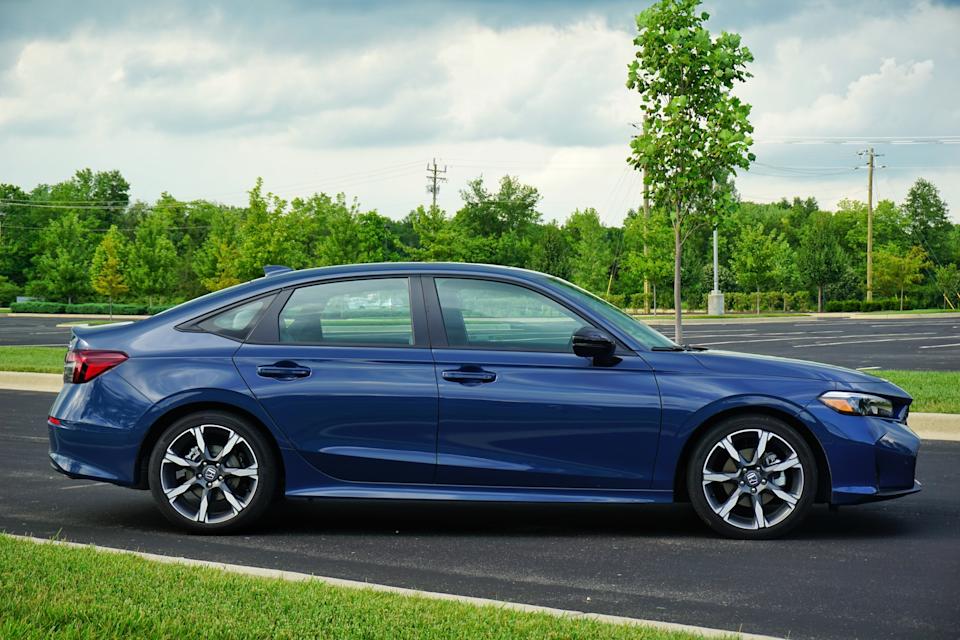
Daily Warrior
The Honda Civic doesn’t need an introduction. The popular sedan remains one of the best-selling cars in the U.S. and, like nearly every vehicle on the market, it has evolved, matured, and become more advanced over the years. Of course, it has also become more expensive.
For 2025, the Sedan Hybrid is offered in two trims: Sport Hybrid and Sport Touring Hybrid. The former will set you back $30,490 while the range-topping Sport Touring Hybrid comes in at $33,490 (including $1,195 destination). You can also opt for the hatchback model, though that will cost you $1,200 more. It’s worth noting that there really isn’t a whole lot you can add to these in terms of options (besides a few unnecessary visual add-ons), so these prices are pretty representative of what most buyers should expect to pay.
The aforementioned reviews will tell you everything you need to know about the Civic Hybrid’s exterior, interior, and driving dynamics. Today I’ll be focusing on its most important attribute: the drivetrain. The 2.0-liter, four-cylinder hybrid engine, continuously variable automatic transmission, and front-wheel-drive system allow this comfortable sedan to go a long way on very little fuel.
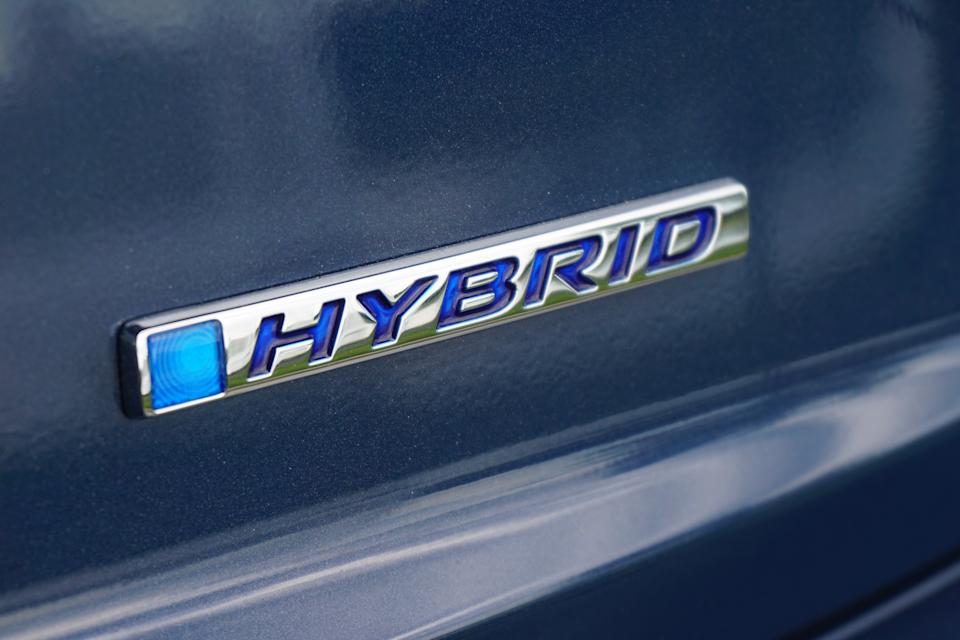
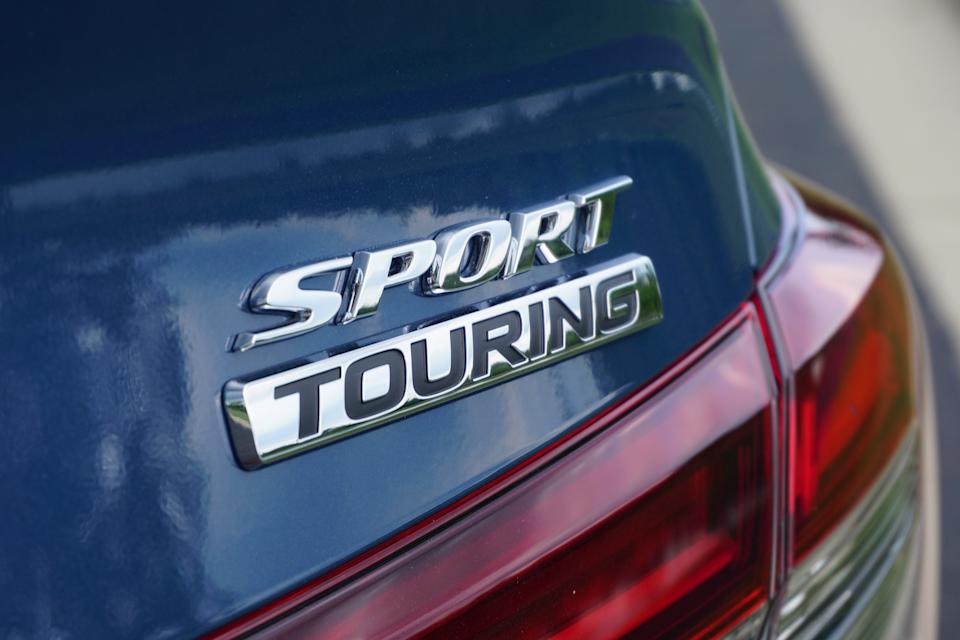
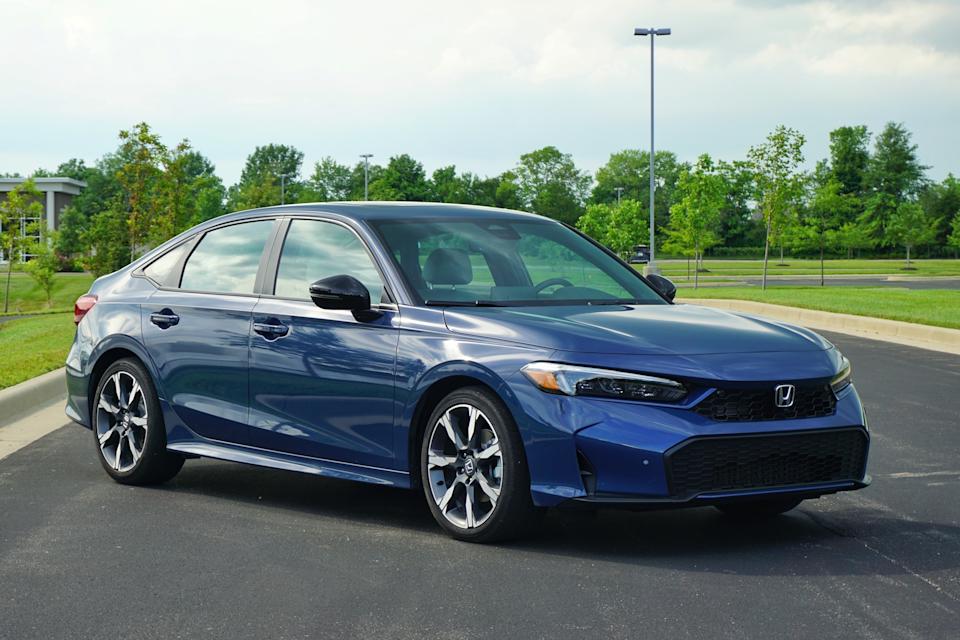
Despite fuel efficiency being the main mission, the battery-assisted four-banger boasts some decent performance specs. There’s 200 horsepower on tap, which is more than enough to get out of your own way and others’ on the highway, and just the right amount to have a little fun on a country road. There’s also 232 lb-ft of torque, netting the Civic Hybrid the same hp but more torque than the sporty Si. The engine is tuned differently, of course, and there’s a CVT instead of a six-speed manual, but overall, Honda did a great job giving the most fuel-efficient Civic a generous pinch of excitement.
MPG Hero
My test began with about 330 miles already logged on this 2025 Civic by the time it was delivered to me. Over nearly eight weeks of daily driving, I racked up 1,830 miles, bringing the total mileage to 2,166 when it went back to Honda.
My goal was to find out the car’s real-world fuel economy. This wasn’t just about city mpg, not just highway, and definitely not about hypermiling or trying to achieve a certain target. Y’know, some days you run errands around town in a hurry because you’re running late to whatever soul-draining commitment is on your calendar, and other days you’re gently cruising across state lines to visit family. And, hopefully, sometimes you don’t even drive at all because you’re at home relaxing. Furthermore, throughout the test, I forced myself to forget that I was even performing it at all to ensure my results were as accurate (and realistic) as possible.
Battery usage is prioritized by the drivetrain as often as possible in the name of fuel efficiency, but you wouldn’t exactly be able to tell this from behind the wheel. In other hybrid economy cars, there is a very noticeable and sometimes harsh transition from electric power to gasoline power. When pulling away from a stop, the battery typically drives the front axle until the gas engine comes in. However, in the Civic, that hand-off is extremely smooth and isn’t felt at the pedals or the steering wheel. There’s no clunk or jolt from the drivetrain, which is quite nice, especially if you’re prone to car sickness.
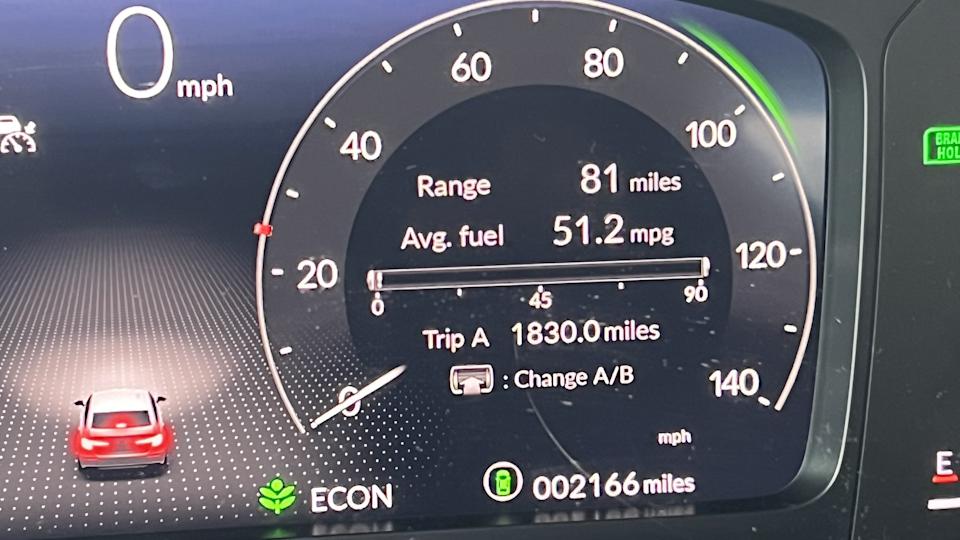
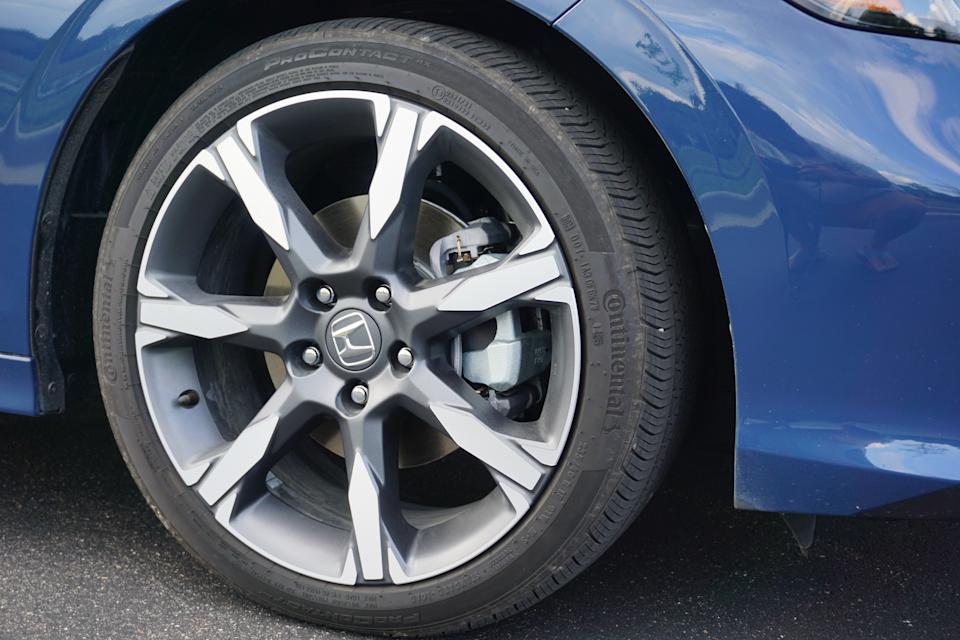
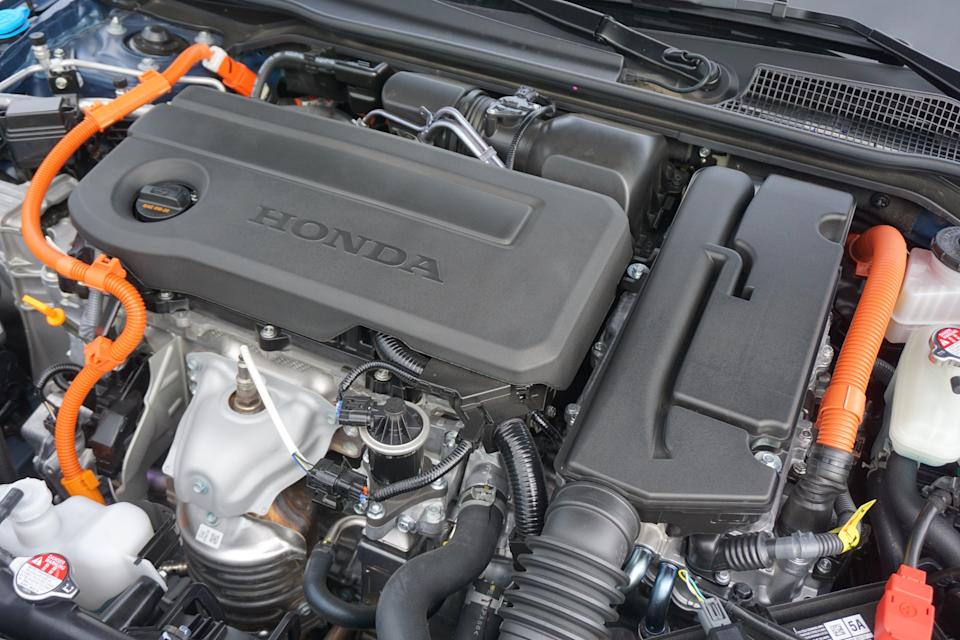
The reason for this is Honda’s two-motor hybrid system, which debuted in the 2014 Accord and is now on its fourth generation. While I won’t bore you with an engineering lesson (primarily because I’m not qualified), I’ll succinctly explain how the five-part system works and why it’s so clever.
First, there’s the electric motor generator that provides electricity to the battery. Then there’s the electric propulsion motor, which provides the power to drive the front wheels. Then comes the Atkinson-cycle gas engine, which is connected to the electric generator/starter motor to work as an electrical generator, supplying power to the hybrid battery and the propulsion motor. Now, here’s one of the keys to the Civic’s efficiency: the engine also drives the wheels via a lockup clutch but this primarily happens during highway cruising conditions for optimum efficiency. Lastly, the PCU (Power Control Unit) is the brain that makes all this magic happen.
What’s even more surprising is that the battery will also be prioritized on the highway, and not just in the city. The highest speed I experienced this at was 75 mph, when the tachometer needle dropped to zero and the battery graphic turned on. Even while cruising on the interstate on battery power, you’ll still have a bit of oomph to pass a slower car when you need to. Of course, step on the accelerator a bit too strongly, and the four-banger will fire right up.
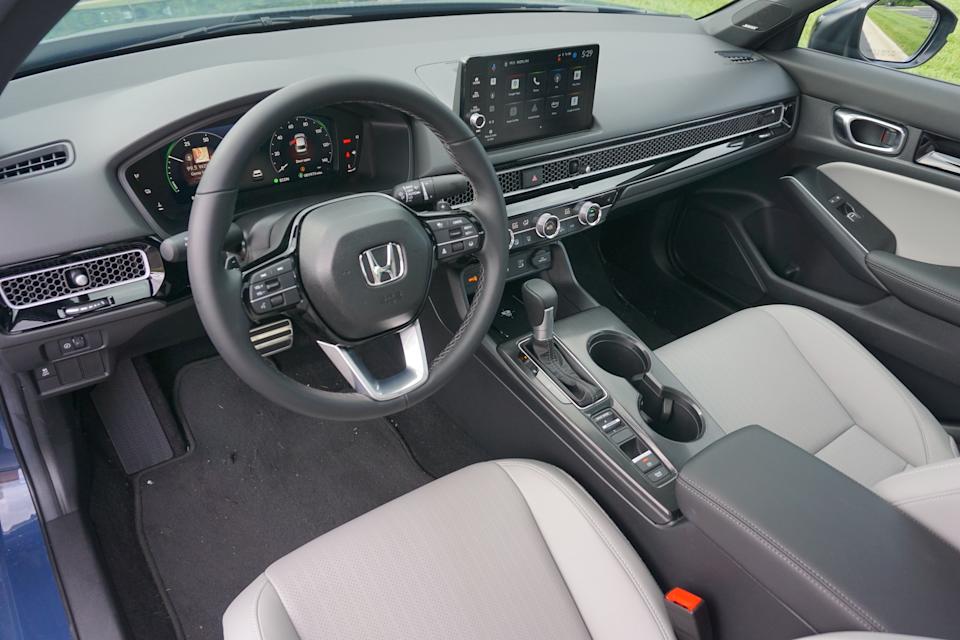
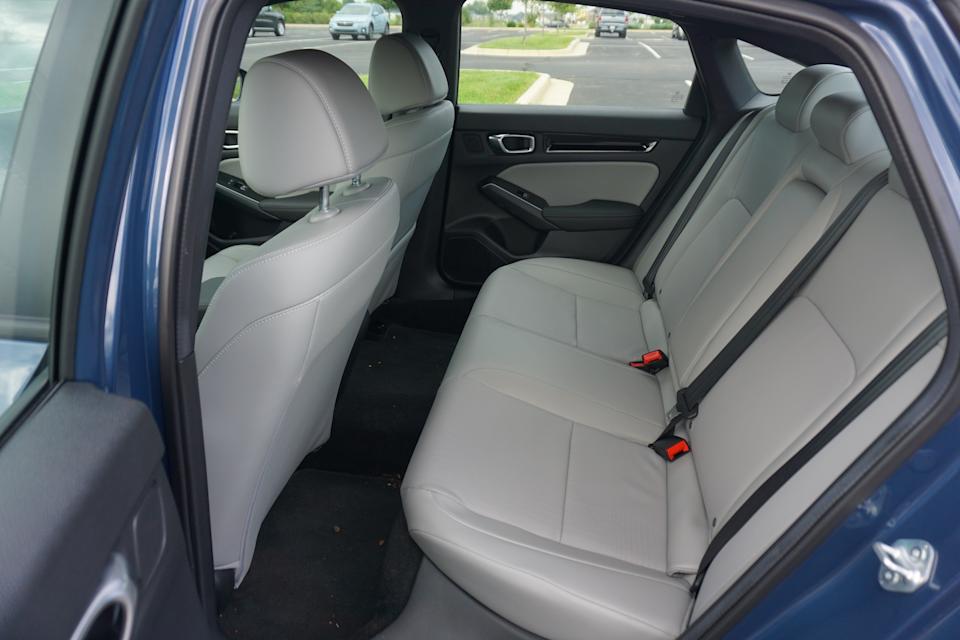
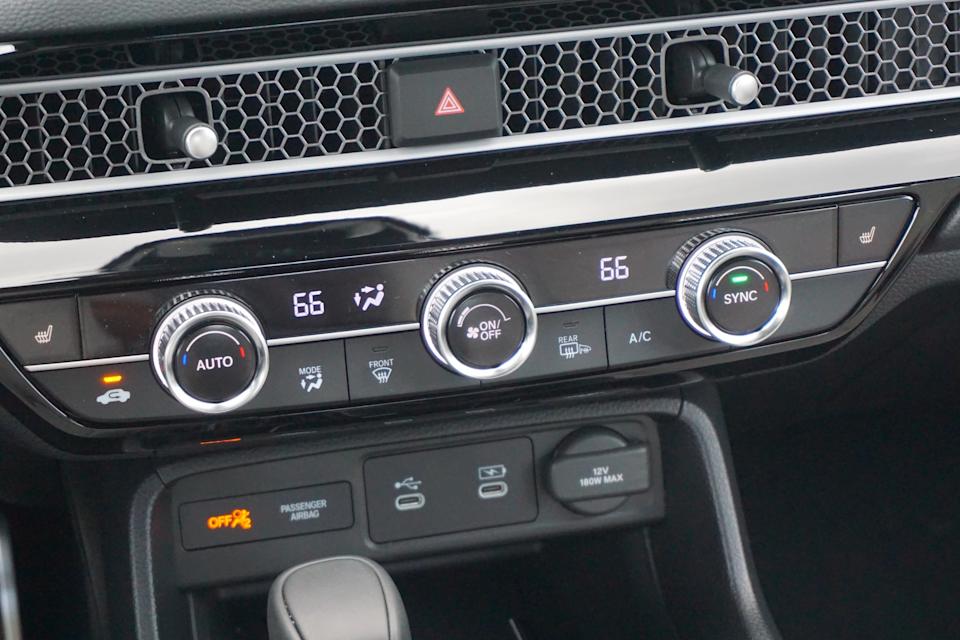
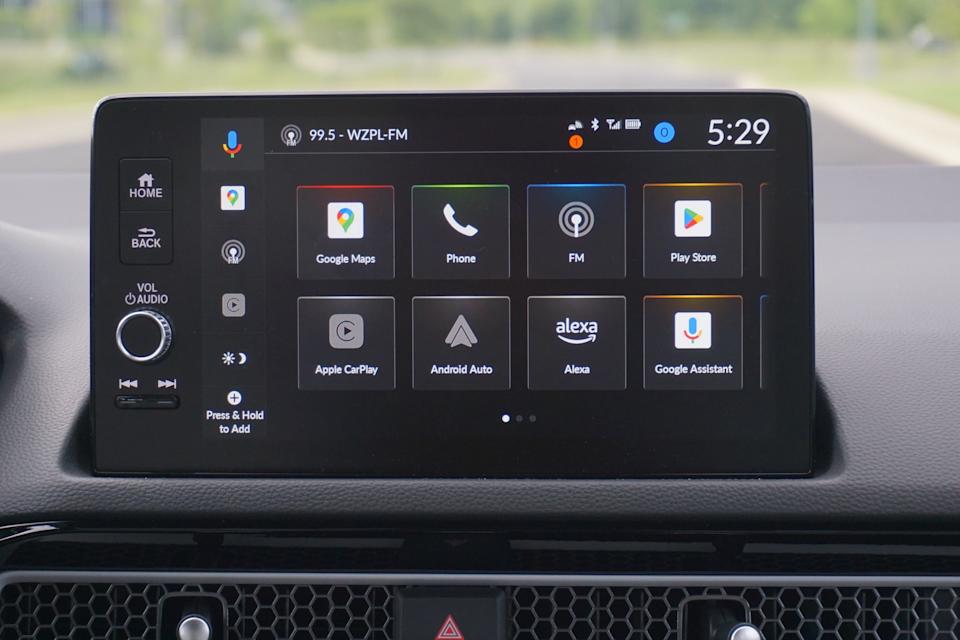
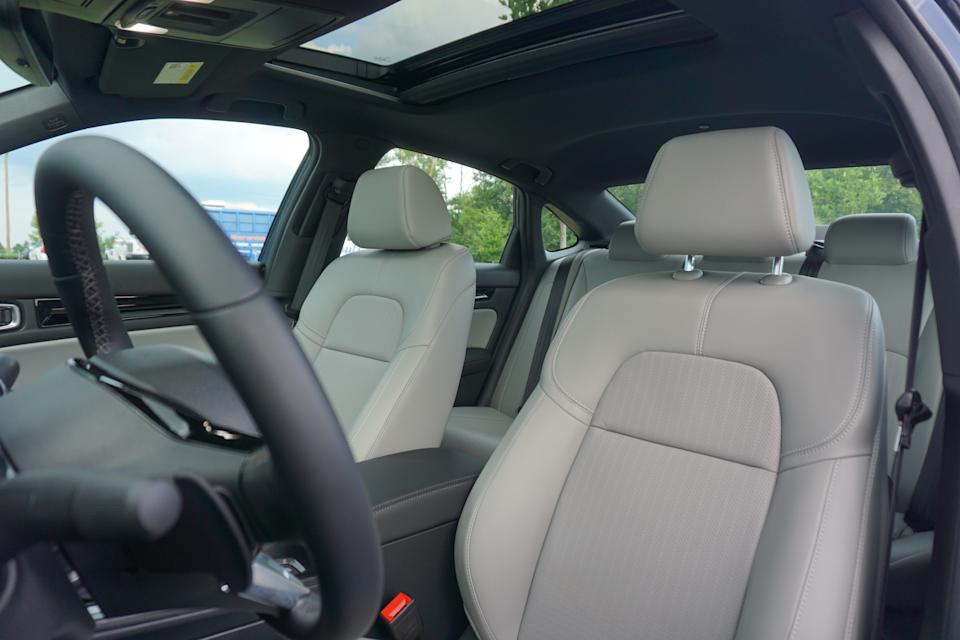
While I drove a wide variety of roads and encountered many driving and weather scenarios during my test, I’d estimate that out of the 1,830 miles, 60% of them were driven in the city, meaning speeds were mostly under 50 mph and with constant stopping. This favors the hybrid powertrain as it can easily recharge the battery, and that means deploying that energy more often, which, in turn, allows the gas engine to remain off.
Early summer in the Midwest can bring a wide range of climates, from 90 degrees during the day to the high 40s overnight. I didn’t observe any variations in performance that could be attributed to extreme weather, like you would in an EV. The Civic behaved up to par throughout the test, and its attitude toward daily driving did not change. I managed to squeeze about 400 to 420 miles out of its 10.6-gallon tank, which is more like 11 gallons with the reserve.
The only annoyance I discovered was the unpleasant sound of the gas engine turning on to take over the battery. This was not felt, per se, just heard. The sound is unrefined and a bit loud. This momentarily interrupts the Civic’s otherwise well-soundproofed cabin.
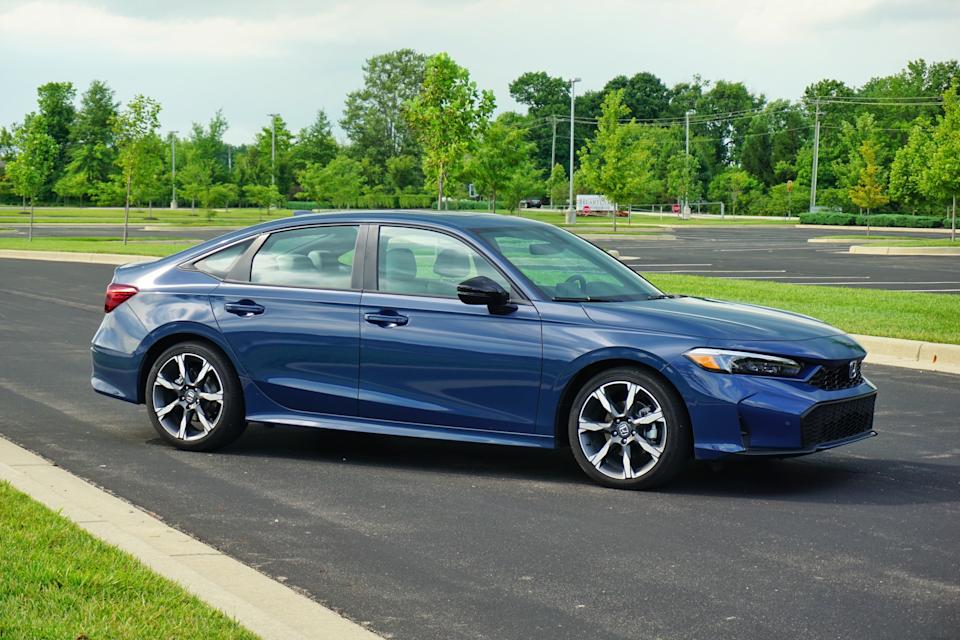
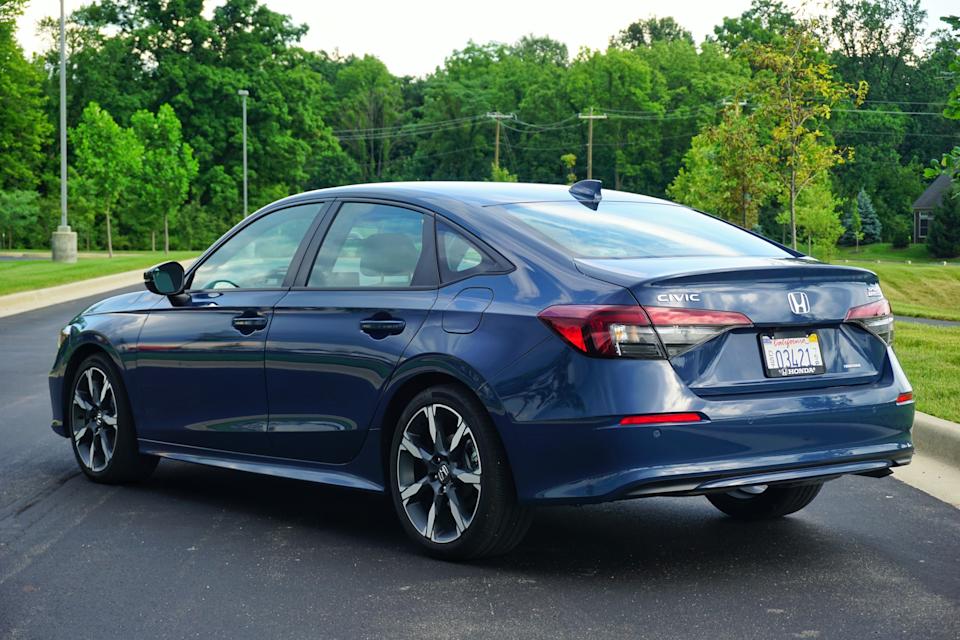
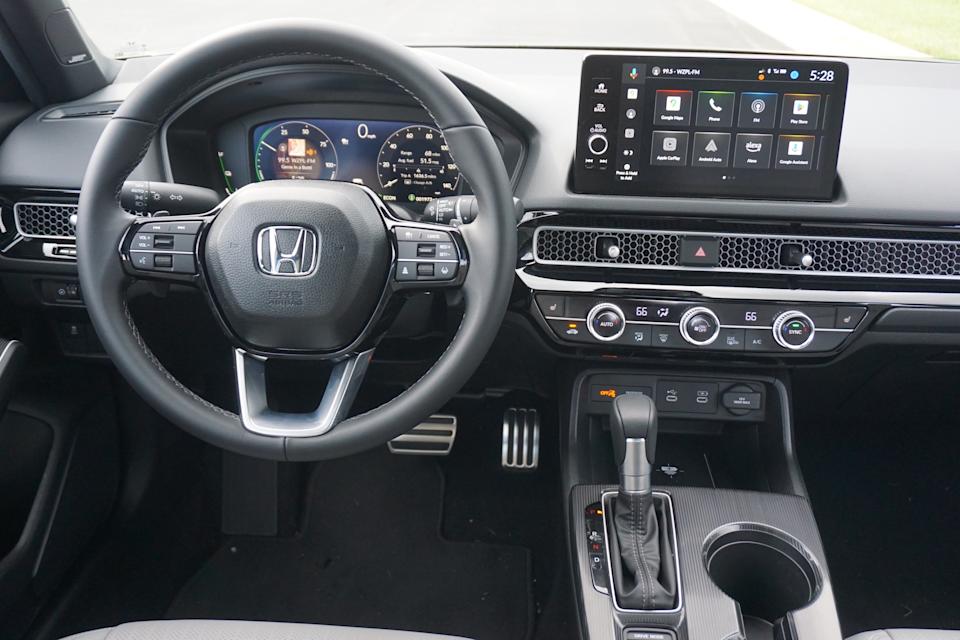
Verdict
My Sport Touring Hybrid tester came in at $33,945 thanks to a single option: the sleek $455 Blue Lagoon Pearl color. Everything was standard besides the paint, and I do mean everything, given the trim’s place at the top of the lineup. Heated leather seats, adaptive cruise control, dual-zone climate, moonroof, wireless Apple CarPlay/Android Auto, Bose sound system, Honda Sensing ADAS tech (standard in all models), 18-inch wheels, and all the cosmetic bits were included. And while it’s fair to say it comes with everything you could need and want, there are a couple of features I would’ve loved to see, such as memory seat positions and a heated steering wheel.
My combined fuel economy number of 51.2 surpasses the EPA’s estimate of 49 mpg. In terms of city-only driving, I averaged over 53 mpg for at least one full tank of gas, which also bested the EPA’s 50 mpg average. And regardless of these figures, anything north of 35 is considered solid in my book. Forty to 45 mpg while enjoying the convenience of a long-range fuel tank plus efficient city driving, and $38 fill-ups at Midwest fuel prices? It calls an EV’s overall value into question. Both have pros and cons, but as a whole, it should entice a car shopper to do loads of research before settling for either drivetrain.
2025 Honda Civic Hybrid Sedan Specs | |
|---|---|
Email the author at [email protected]

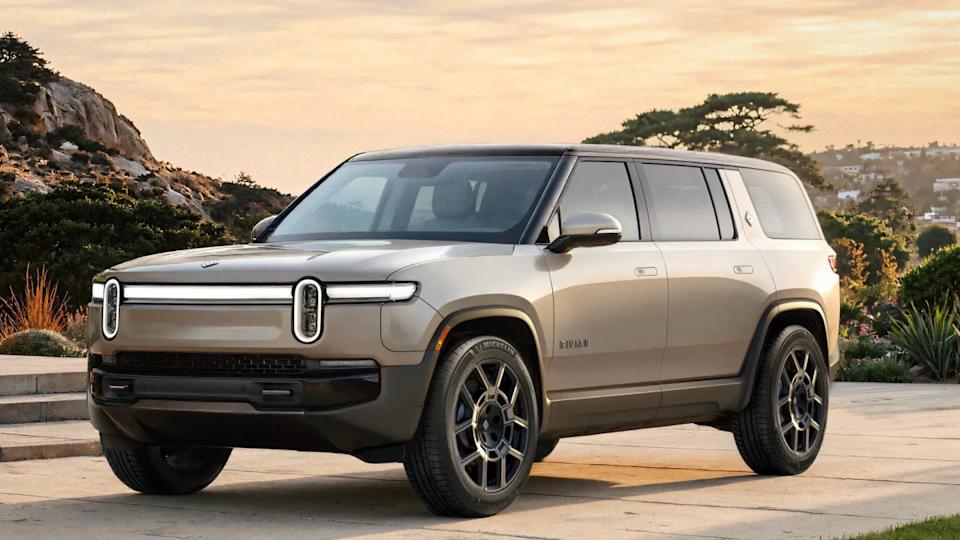
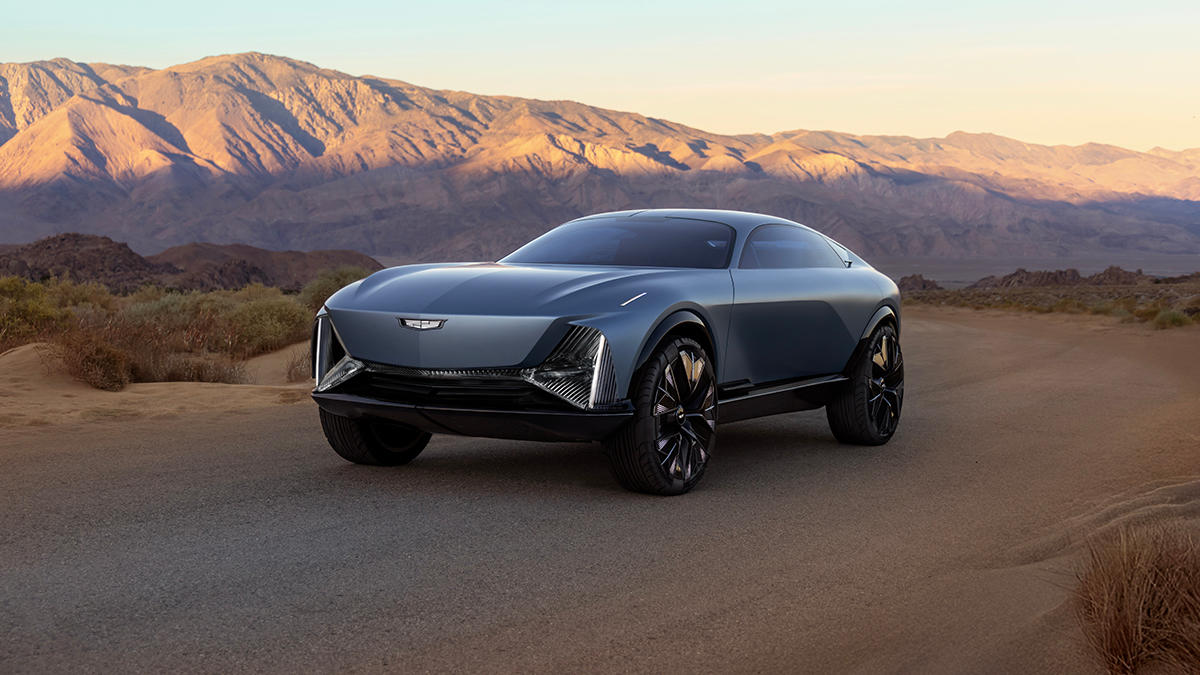
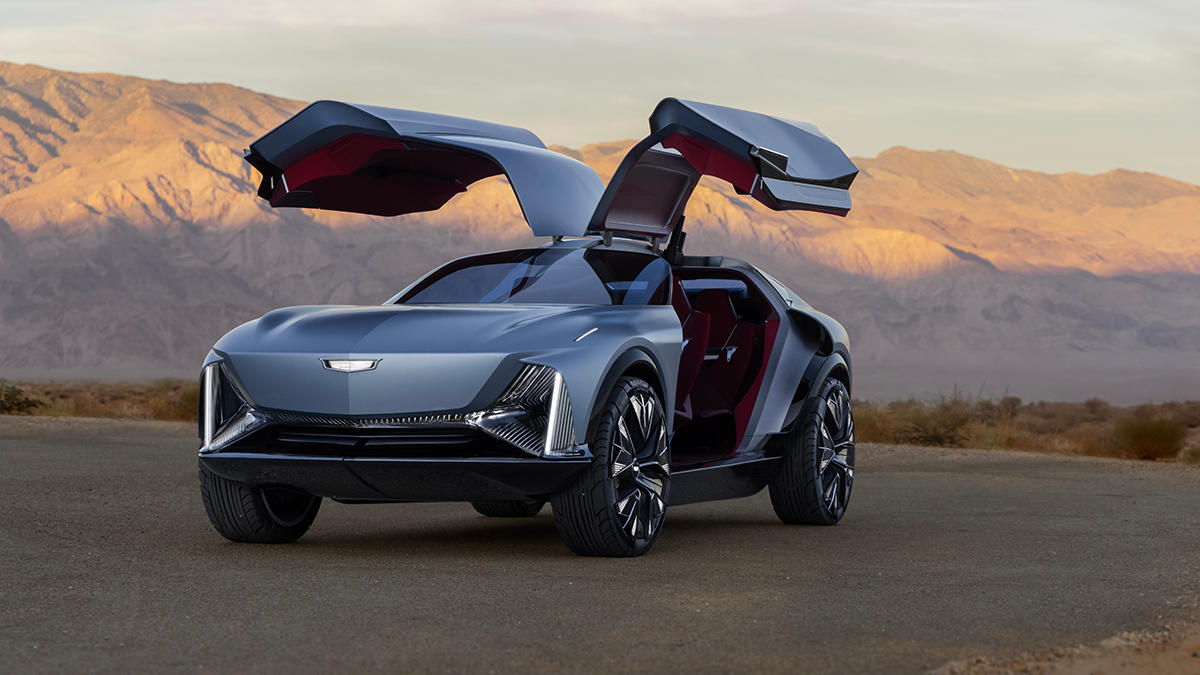
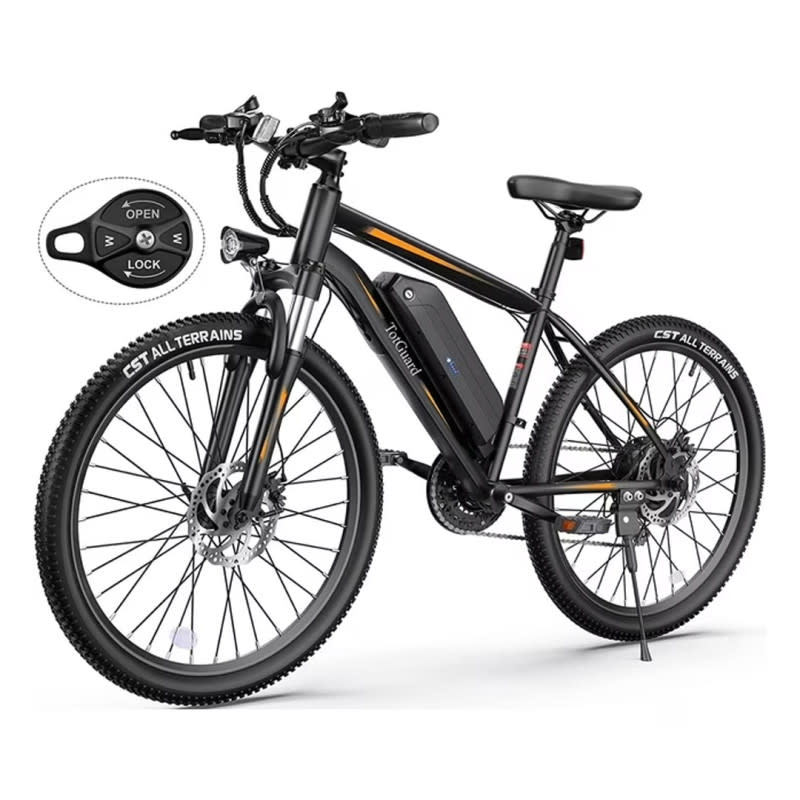
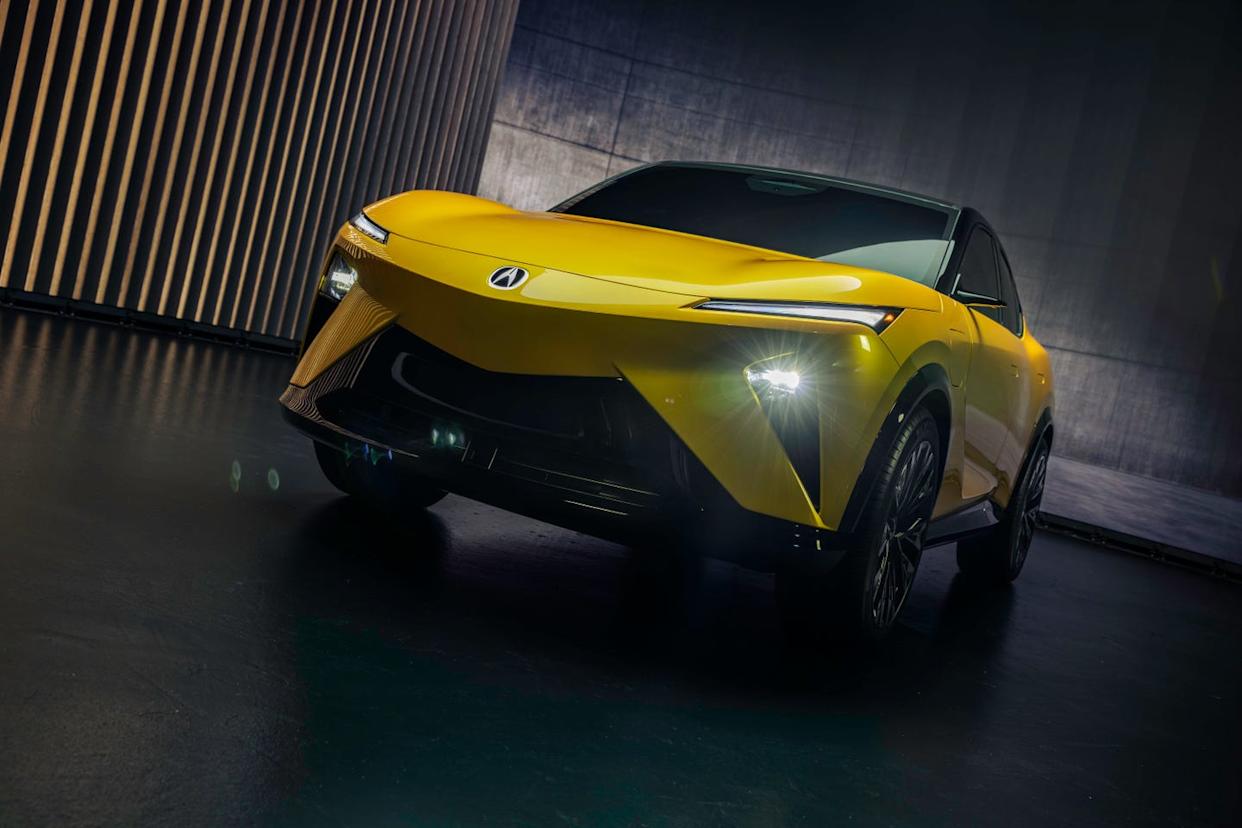
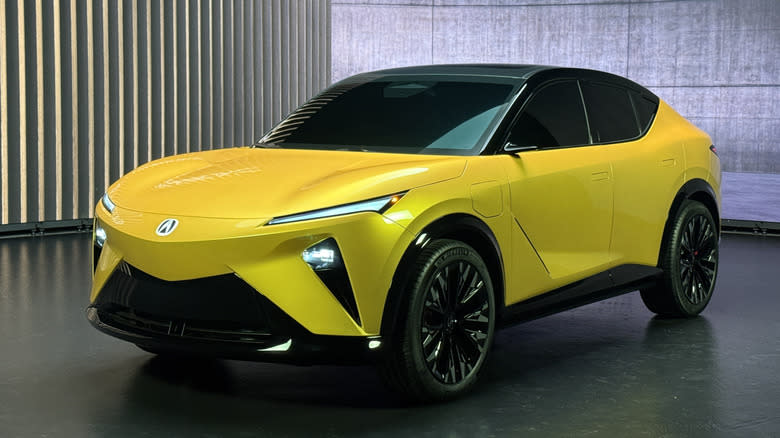
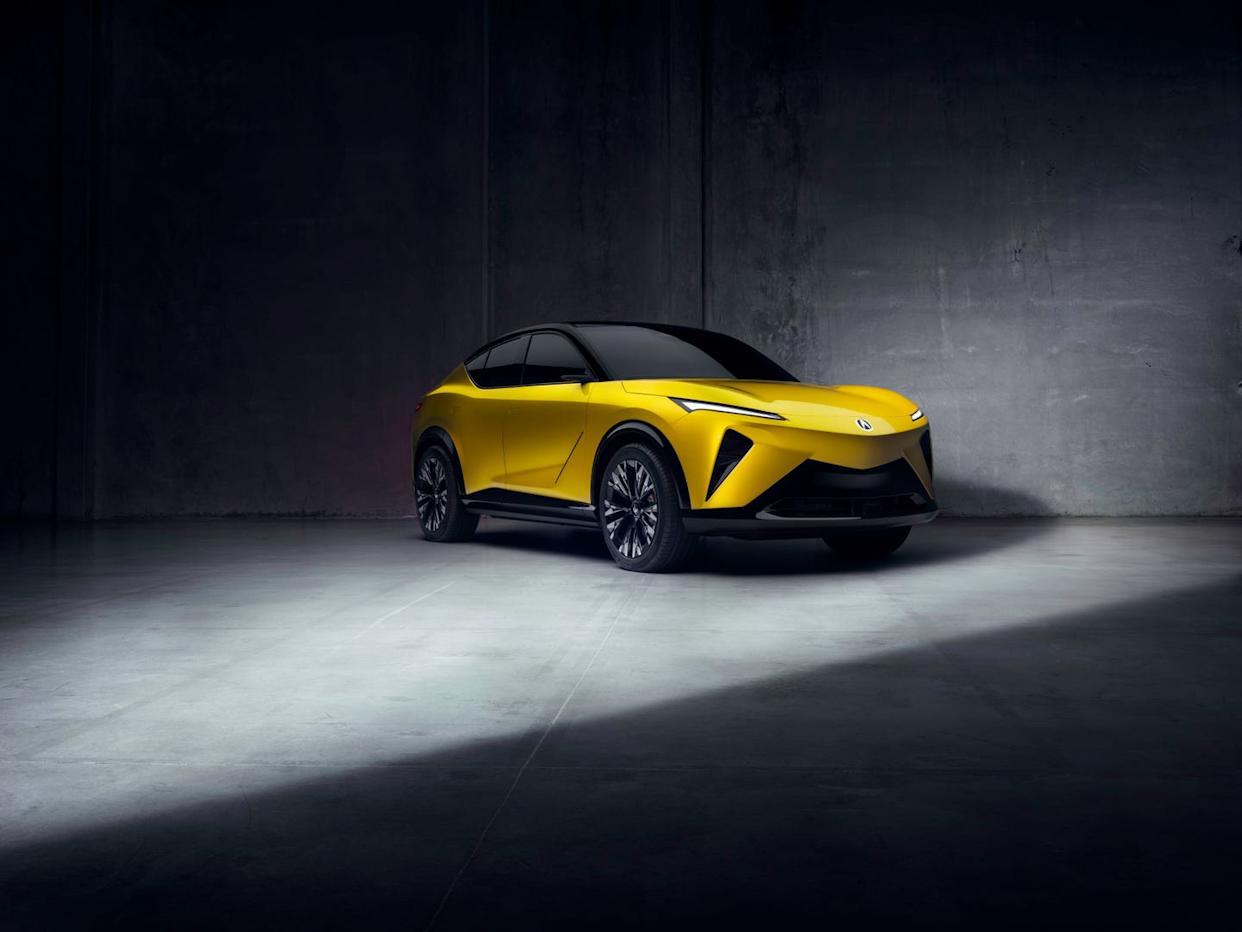
Comments